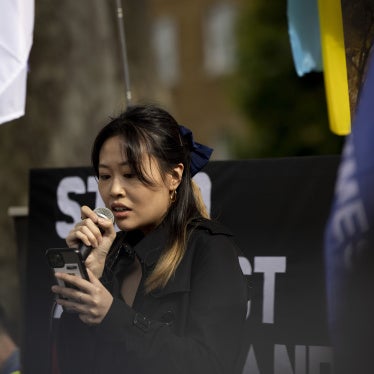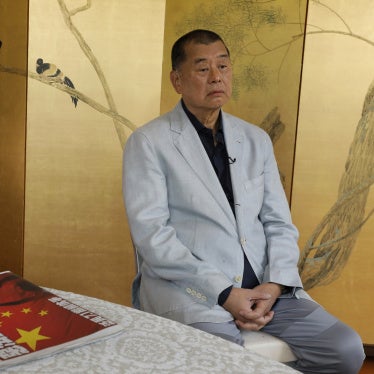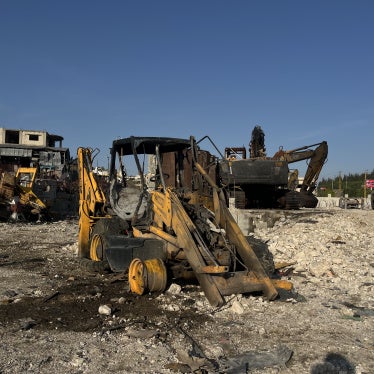Since the 2002 Sri Lankan ceasefire collapsed in April 2006 and fighting resumed in the north and east, many are asking whether it will be possible to prevent a return to all-out war between the Colombo government and the Liberation Tigers of Tamil Eelam (LTTE). The evidence of the bitter and destructive current fighting in the northern Jaffna peninsula, in which dozens of soldiers on either side have been killed, might even suggest that the tipping-point has been passed.
The renewed conflict, which has escalated dramatically in recent weeks, is also taking an enormous toll on civilians. The tit-for-tat political killings have now become bloody massacres by both sides. In the towns of Muttur and Sampur, the constant barrage of artillery has claimed an untold number of lives. On 6 August 2006, the bodies of fifteen staff members of the international aid organisation Action Contre La Faim (ACF) were found in the town of Muttur, most with gunshot wounds to the head. The bodies of two other staff members were reportedly found in a car nearby. Sixteen of those killed were minority Tamil, one was Muslim. The ACF, suspending operations in Sri Lanka, announced that its "entire team in Muttur was assassinated."
Although the identity of the killers remains unknown, circumstantial evidence points to government soldiers. Colombo has ordered an enquiry, inviting an Australian forensics expert to investigate, but the government has a poor record of investigating and prosecuting atrocities, and hopes are low that this time will be any different. The balance of international opinion, reflected in a statement by the Sri Lanka Monitoring Mission (SLMM) on 30 August, is that the Sri Lankan government's own forces were responsible for the massacre.
The return of military conflict in Jaffna and the east is accompanied by a continuation of political violence. On 12 August, Kethesh Loganathan, a courageous Tamil human-rights advocate who had joined the government's peace secretariat seeking a solution to the conflict, was killed in an attack that bore the hallmarks of an LTTE assassination. Throughout Sri Lanka's two-decade long conflict, the Tamil Tigers have decimated the moderate Tamil leadership in order to maintain a totalitarian hold on Tamil politics.
When I spoke to Loganathan in Colombo in June, he was depressed about the peace process. "There was a policy of pacification and appeasement of the LTTE by both the government and the international community which has only encouraged human-rights violations to the point where we will end up with multiple sources of violence, including, I fear, sections of the defence establishment running amok", he said.
His fears were justified. Fierce fighting that broke out after Tigers closed a reservoir sluice gate on 20 July, cutting off crucial water supplies, has killed many civilians and displaced hundreds of thousands. On 14 August, suspected Tamil Tiger bombers attacked the Pakistani ambassador's convoy; he escaped, but seven others died. That day air-force bombs killed at least twenty (the LTTE claims sixty-one) Tamils, mostly young women, and injured more than 100. The Tamil Tigers said the site was a school deep in their territory. The army claimed it had bombed a rebel camp.
The cost of neglect
With rampant impunity for serious human-rights abuses, violence continues to escalate. More than 1,000 combatants and civilians have been killed in 2006. This has placed the SLMM truce mission, created as part of the Norwegian-brokered ceasefire agreement to keep tabs on ceasefire violations by both sides, in an increasingly difficult position.
The monitoring mission is hamstrung by its connection to the peace process, limiting its willingness to speak out on human-rights violations for fear of disrupting peace talks. Its limited capacity was severely weakened when, on 1 August, Sweden, Finland and Denmark announced their withdrawal from the mission in response to a Tamil Tiger demand that all European Union nations pull out because the EU had named it (in May 2006) as a terrorist group.
So, while the world gears up for the deployment of 15,000 peacekeepers in southern Lebanon, Sri Lanka - where more than 65,000 have died since the conflict began - now has lost thirty-seven of its fifty-seven monitors. That's right: only twenty international civilian monitors are on the ground with a limited mandate as the country descends into conflict.
The United Nations should turn to Sri Lanka now and immediately dispatch a team to investigate the recent killings. It should then, perhaps through the new Human Rights Council, approve a strong human rights monitoring and protection mission that would operate in government and Tamil Tiger-held areas. Such a mission would be separate from peace talks, allowing it to speak out with a clear voice on human-rights abuses - political killings, "disappearances," death threats. It would not end human-rights abuses in Sri Lanka, but it would increase pressure for accountability and help to deter them. Crucially, it could also help create the space for independent Tamil voices.
Norway, India, the United States, Japan and the European Union are trying to give new life to the peace process, while largely ignoring the escalating human-rights crisis. Now is the time to disrupt the vicious cycle of abuses that feed the conflict and lead to more abuses. For the people of Sri Lanka, doing nothing will be disastrous.
Meenakshi Ganguly is South Asia researcher at Human Rights Watch.








